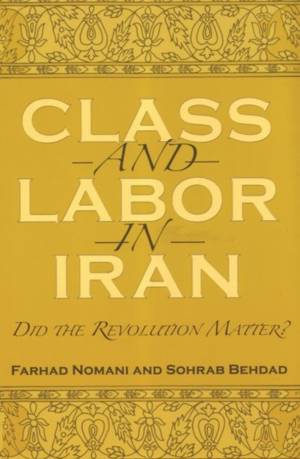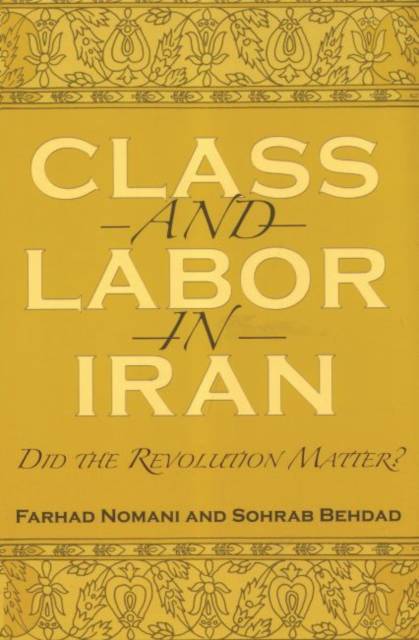
- Afhalen na 1 uur in een winkel met voorraad
- Gratis thuislevering in België vanaf € 30
- Ruim aanbod met 7 miljoen producten
- Afhalen na 1 uur in een winkel met voorraad
- Gratis thuislevering in België vanaf € 30
- Ruim aanbod met 7 miljoen producten
Zoeken
€ 38,45
+ 76 punten
Uitvoering
Omschrijving
In the past twenty-five years Iran has experienced a revolution and a turbulent postrevolutionary period under an Islamic state that declared itself the government of the oppressed while it struggled to establish a utopian Islamic economy. In this pioneering work Farhad Nomani and Sohrab Behdad provide a comprehensive analysis of the dynamics of change and class configuration in Iranian society. Using an empirical framework, they map the trajectory of class changes over time, specifically noting the movements between prerevolutionary and postrevolutionary Iran. A centerpiece of the book is its analysis of the changes in the pattern of employment of women in the postrevolutionary period. Despite its conceptual and quantitative approach, the book is written in a clear and lucid style, making it accessible to a wide audience. The authors provide a fresh look into Iranian society by exploring the changes in its essential underlying economic structure, and in doing so, they lay the foundation for comparative studies of the social hierarchy of labor in other Middle Eastern countries.
Specificaties
Betrokkenen
- Auteur(s):
- Uitgeverij:
Inhoud
- Aantal bladzijden:
- 284
- Taal:
- Engels
- Reeks:
Eigenschappen
- Productcode (EAN):
- 9780815630944
- Verschijningsdatum:
- 19/06/2006
- Uitvoering:
- Paperback
- Formaat:
- Trade paperback (VS)
- Afmetingen:
- 162 mm x 233 mm
- Gewicht:
- 412 g

Alleen bij Standaard Boekhandel
+ 76 punten op je klantenkaart van Standaard Boekhandel
Beoordelingen
We publiceren alleen reviews die voldoen aan de voorwaarden voor reviews. Bekijk onze voorwaarden voor reviews.











